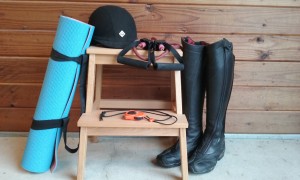 Yoga, spinning, Pilates, CrossFit®, P90X®, Zoomba®, the Bar Method, POUND… there are as many fitness programs and fads in the world as there are people to use them. Each one has its unique appeal and touted benefit, though all provide essentially the same underlying benefit – they challenge the body’s habituated movement patterns, develop muscular strength and improve cardiovascular stamina.
Yoga, spinning, Pilates, CrossFit®, P90X®, Zoomba®, the Bar Method, POUND… there are as many fitness programs and fads in the world as there are people to use them. Each one has its unique appeal and touted benefit, though all provide essentially the same underlying benefit – they challenge the body’s habituated movement patterns, develop muscular strength and improve cardiovascular stamina.
Many equestrians have realized, quite rightly, that they ride better when they are stronger and have greater cardiovascular stamina. However, while there are fitness programs based on the inherent physical demands of cycling, dancing, running, kick boxing, wrestling, etc… there are no mainstream fitness programs that fully address the physical requirements of riding horses.
Many riders try whichever program appeals to them or their friends recommend, not knowing if the program is really making them ride better or not. Some of the popular fitness programs actually train the body in ways that are entirely counterproductive to riding! In some cases riders resort to creating their own programs – combining different fitness methodologies and hoping that if they put the right things together they will cover their fitness needs. Still others try to explain what they need to a personal trainer so he or she can develop an appropriate fitness program for them. Sometimes personal trainers come along who are themselves riders, and develop programs targeted to riders, but these are often not widely accessible to the average rider. It is highly unlikely that a Rider Fitness class will ever show up at the local gym, and until it does, riders are pretty much on their own in figuring out the best way to train their bodies off the horse.
What is a rider to do? How can you know if your favorite fitness program is actually helping you ride better? What should you look for in a fitness program? To help you answer these questions for yourself, I’ve identified four key elements a fitness program must have in order to make a positive and lasting impact on your riding. These four key elements are Balance, Coordination, Stability, and Mobility training. Let’s take a look at each element.
Balance
Anyone can stand on a wobble board, do squats on a Bosu, or practice balance-challenging yoga poses, but as an equestrian, you need to be able to balance on your seat, on a moving object, with little to no control over how that object is going to move from moment to moment. No amount of standing balance is going to properly train that. However, balance training on a stability ball – both sitting and kneeling – will train your brain and body to respond to instantaneous balance changes that you have little control over. Training on the ball also brings a tremendous amount of awareness about how even the smallest changes in your upper body affect the horse’s balance, as the ball moves in response to every tiny shift you make. This type of training is invaluable, and there are numerous exercises that can be performed with the ball, that will greatly benefit your ability to balance in movement with the horse.
Coordination
We all know the feeling of doing our best to keep our heels down, knees soft, seat deep, arms relaxed, hands just above the withers, eyes up, and still be trying to apply the correct aids in the correct timing, listening to the instructor’s next directions, and steering the horse all at once! This takes tremendous physical and mental coordination. Coordination training for the rider makes the physical coordination more instinctual for our bodies, so we have enough attention left over to be aware of what’s going on around us, feel what our horse is doing, and listen to the instructions we’re being given.
What does coordination training look like? Doing several things at once in an exercise will train our physical
coordination and expand our capacity for mental focus. For example, a side-to-side crossover exercise where one leg crosses in front and then behind the other will challenge coordination slightly, while adding a twist of the upper body, swing of the arms, and eyes following the twist at the same time, will begin to approximate the coordination your body needs for riding. Another, more advanced coordination exercise would be kneeling on a 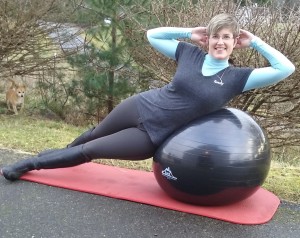 balance ball while juggling balls. A good exercise program for riders will include many combination exercises such as these for optimum coordination training.
balance ball while juggling balls. A good exercise program for riders will include many combination exercises such as these for optimum coordination training.
Stability
Many of the more popular exercise programs encourage a lot of explosive “power” exercises: power crunches, power jumps, power burpees, etc… There is no point at which this type of movement is needed on the horse, however. Rather, a supple and stable body that is under your complete control and capable of tiny, subtle movements despite being “tossed about” by the horse is what a rider truly needs. This type of fine muscle control comes from slow and controlled strength exercises, with excellent breath support. A good example of this type of exercise is a side crunch on the ball. It develops the strength of the oblique muscles from hip to ribs, while requiring the body to adapt to balance changes, developing fine movement control of the upper body. Another great example of this type of exercise is a V-sit with a pelvic tilt. This exercise isolates the psoas muscle – the rider’s best friend – creating very fine control of the position of the pelvis, while strengthening the psoas muscles through movement.
On the subject of stability, one cannot avoid discussing the “core”. Most riders know that they need a more stable “core”, and yet the vast majority of riders think only of their abdominal muscles when the term used. They might do lots of crunches, sit-ups and boat poses, thinking they are developing a strong core. However, they completely overlook the back and sides of their bodies, and even if they do some training of those muscles, they often isolate just a few. There are many small and overlooked muscles that provide “core” stability, which cannot be addressed by only working the abs. A great rider-specific workout will work all of these muscles evenly, from shoulders to hips, rather than isolating just a few.
Mobility
I like to say that without mobility there is no relaxation, and without relaxation there is no feel on the horse. I would add to that, without unrestricted mobility of the rider’s body, there is no swinging or freedom of movement in the horse. It would probably surprise you how many riders have tightness and restricted mobility in their hips, without having any idea that they do – even thinking they are very flexible in the hips. It might surprise you even more how many “lazy” horses are actually being restricted from going forward by their rider’s lack of mobility. One thing that I see with nearly every horse and rider combination in my clinics is that after the rider does several mobility exercises, the horses start to really move out with impulsion.
What does mobility mean for the rider? It means that the joints in the rider’s body are free enough of restrictions to allow the motion of the horse to move through them, equally, from head to heels. When there is one area of the body that is restricted, another area must become hyper-mobile in order to allow for the horse’s movement and prevent the rider from bouncing uncomfortably against the horse’s back. We often see this in bobbing heads, bouncing heels, or even hyper-mobile lower backs. These areas of hyper-mobility are at risk for stress injuries, while the areas of restriction cause the horse to have to compensate for the lack of mobility in some part of his own body.
The best mobility exercises for riders are done in movement, rather than through static stretching. Static stretching has its place in fitness, but there is nothing static about being on a horse, so it has only limited benefit for a rider. An example of a “mobility through movement” exercise would be a hip opener exercise that I like a lot, which mobilizes and removes restrictions from the hip joint through small circles and rotational movements of the joint. Another great mobility exercise is what I call a hip and shoulder twist, which mobilizes the entire spine in a rotational movement, while simultaneously releasing tightness in the hips and both engaging and stretching the core muscles all the way around the body.
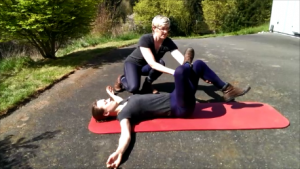 The bottom line is that a great sport-specific fitness program for equestrians that actually improves fitness for riding will put equal emphasis on all four of these key elements. Without mobility and stability, there can be no balance or coordination. Without balance and coordination, the rider cannot hope to ever develop an independent seat, good timing or truly effective aids.
The bottom line is that a great sport-specific fitness program for equestrians that actually improves fitness for riding will put equal emphasis on all four of these key elements. Without mobility and stability, there can be no balance or coordination. Without balance and coordination, the rider cannot hope to ever develop an independent seat, good timing or truly effective aids.
With a fitness program that combines all four of these elements, your body can actually be prepared for the challenges of riding off the horse, and time spent in the saddle can be utilized for refining your skills and advancing your training program, rather than continuously working on basic equitation! Furthermore, this type of complete fitness program will greatly increase your longevity as a rider, since it provides much more than simply better riding fitness – it provides better fitness for all of life.
Try Ridefit Now
Want to try Ridefit for free? Download one of our brand new FREE exercise guides:
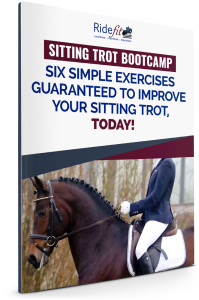
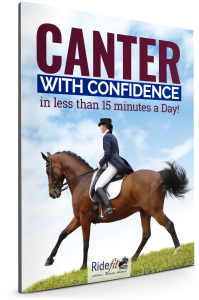
u2aoxz
Good https://lc.cx/xjXBQT